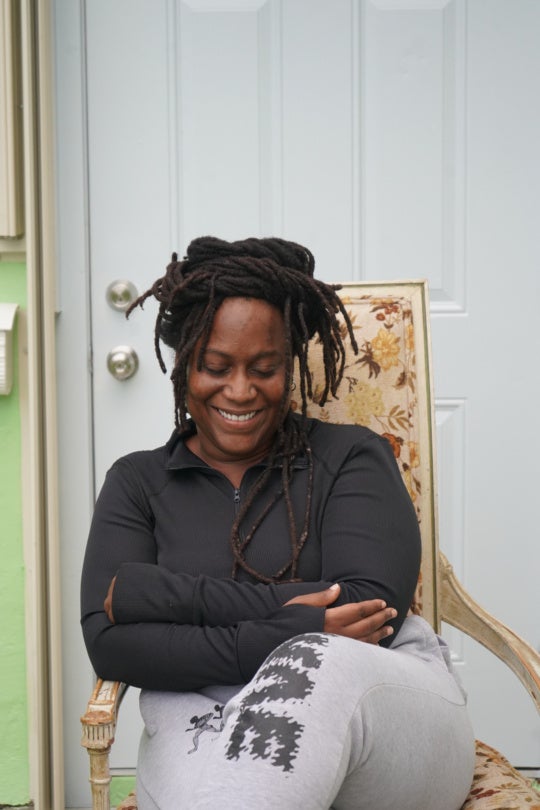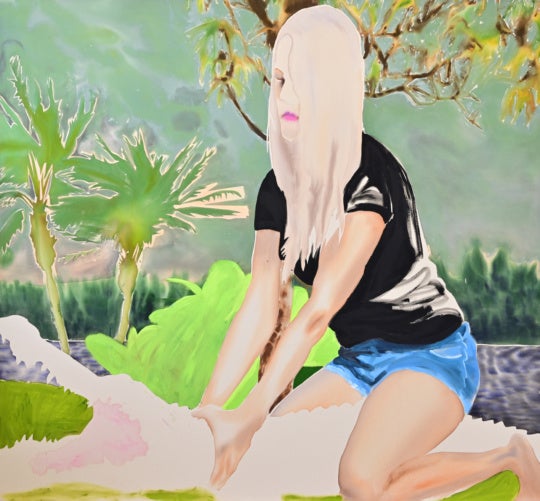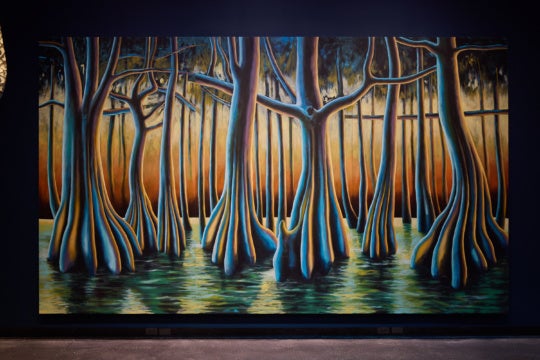
The exhibition “Making Africa: A Continent of Contemporary Design,” currently on view at the High Museum of Art, upends the Eurocentric narrative of Africa that paints the continent and its people as hopeless, lacking innovation, and unable to solve their own problems. By engaging the public in a new conversation about the continent, the show presents Africa and its people through a futurist lens that portrays them as guardians of the next century of design, fashion and technology, a story that unfolds through quotes from African authors and scholars with the shared belief in the rise of the continent. Curated by Amelie Klein of the Vitra Design Museum in Weil am Rhein, Germany, it is on view through January 7.
To think about a future is to think about one’s possibilities on the world, and I have oftentimes said that the future belongs to Africa, because it seems to have happened everywhere else already. — Okwui Enwezor
The works on view provide a counter narrative that upends long-held Western stereotypes. The exhibition transports viewers to a new self-defining Africa full of ingenuity, resourcefulness, and forward-thinking design. Near the entrance, a display of whimsical eyeglasses, created by by Cyrus Kabiru from found objects, is an introduction to the creative minds that are a driving force throughout the 54 countries on the continent.

The exhibition makes a convincing case of the inevitable rise of Africa on the world stage. “Making Africa” contradicts the outdated views of Africa as impoverished and dependent on its colonizers. Instead, viewers discover a place full of curiosities where the African aesthetic and sensibilities are the standard of everyday life. But it’s not a parallel universe; it’s Africa as seen through the eyes of Africans. But what makes a person or object truly African? Even among Africans the answer is layered in complexity, says curator Koyo Kouoh.
“An African is an African as a very last instance. He is first and foremost a Wolof, or Doula or an Igbo and then after that he becomes maybe Nigerian, Cameroonian or Senegalese, then maybe he becomes African.” -Koyo Kouoh, a curator based in Dakar and member of the “Making Africa” advisory board.
Africa is large and diverse and when creating the exhibition Klein was careful to not generalize the continent’s more than 2,000 languages and cultures. She included interviews from artists and designers from various countries, and works such as Alkebu-Lan 1260 AH by Nikolaj Cyon, a map that depicts an inverted Africa at the top of the world, as if it had never been colonized. The title is an old Arabic term meaning Land of the Blacks, suggesting an African point of view. By focusing on the diversity of Africa, Klein gives a new generation a voice via the platform of design. The large circular sculpture Jua Kali City by Kenyan artists Tahir Carl Karmali, Dennis Muraguri, and Tonney Mugo, includes one large wheel that represents Kenya, and a smaller wheel that represents the hard work and informal economy that is the driving force turning the larger wheel, commonly known as jua kali, a term often used for inferior products. Klein says it’s representative of the global South in general: “It’s the small wheel with the corrugated steel and all its informality that moves the large city.”

Resourcefulness fuels the economy of creativity, and sometimes results in a retro-futurist aesthetic. It’s evident in the Sansa armchair made of metal nylon and cords by Malian-born Cheick Diallo, or the Humannest, a life-size swinging nest made of Kooboo basketwork by Porky Hefer.

The pieces are the epitome of modernity yet born out of a place seen as lacking the necessary elements to produce high-concept design. And that’s the beauty of “Making Africa.” It provides a different perspective by showing how Western influences have been transformed to create a uniquely African aesthetic. There are no victims portrayed in this show. Instead, we see ingenious and determined individuals using challenges as launching pads for opportunities, as seen in the videos series My Africa Is by Nosarieme Garrick, in which villagers repurpose plastic bottles pulled from the ocean to create fishing boats. There is an overarching theme of resilience and strength despite the raping of natural resources by imperialist governments. The Prophecy photo series by Fabrice Monteiro portrays the African woman as a dominant figure who inevitably inflicts retribution on those who ravaged her homeland and people. The effrontery to stand up in the face of injustice and declare revenge is powerful.

There’s also an undercurrent of ambition throughout the exhibition that defines Africa. In the film Afronauts by Frances Bodomo, a group of men use a homemade rocket and found objects to train an albino woman for a voyage to the moon. Undaunted by the success of wealthier nations, like the U.S., they continue with their plans in hope to put their stamp on the world stage. With the inevitable failure of their ambitious plans, the group celebrates, at the least, a launch.

For his Project Diaspora series, Omar Victor Diop depicts African men in royal garb with soccer balls and cleats, as if to say, We can do it better than you. Similarly, the Ikire Jones menswear line by Nigerian American designer Wale Oyejide features Western-style suits and clothing made with brightly colored African fabrics that boldly state, I have arrived, an educated proud African.

The museum installation peters out at the end, where many of the walls are bare and the installations sparse. The small museum shop set up just outside the show is filled with colorful baskets, dresses, woven bowls, clutch bags, paintings and books. It is there that visitors see how design impacts everyday life, as in a small living room display with pillows made from animal skin and a vase resembling a tusk or horn. This stylish element could have been included in “Making Africa” to showcase how design translates in the most important part of any culture … the home.





